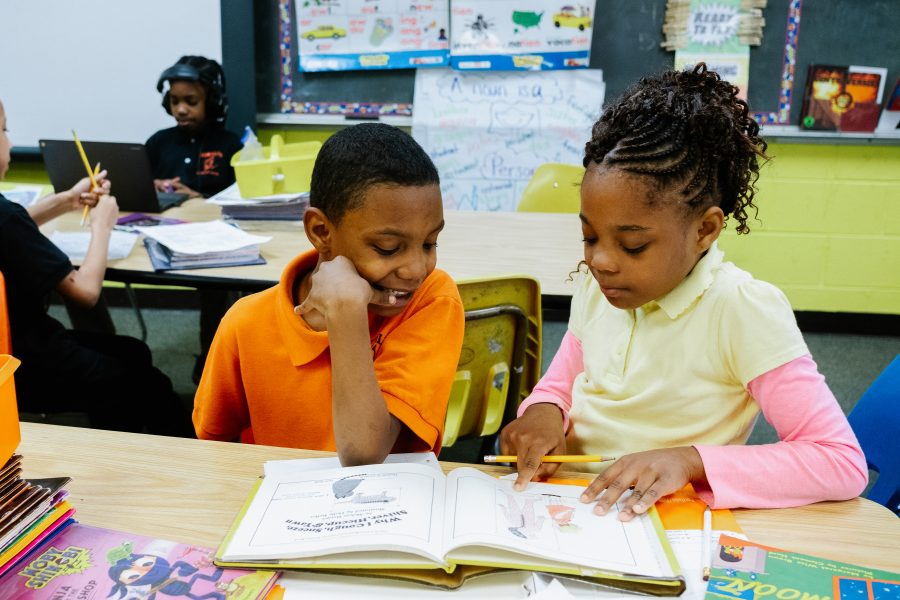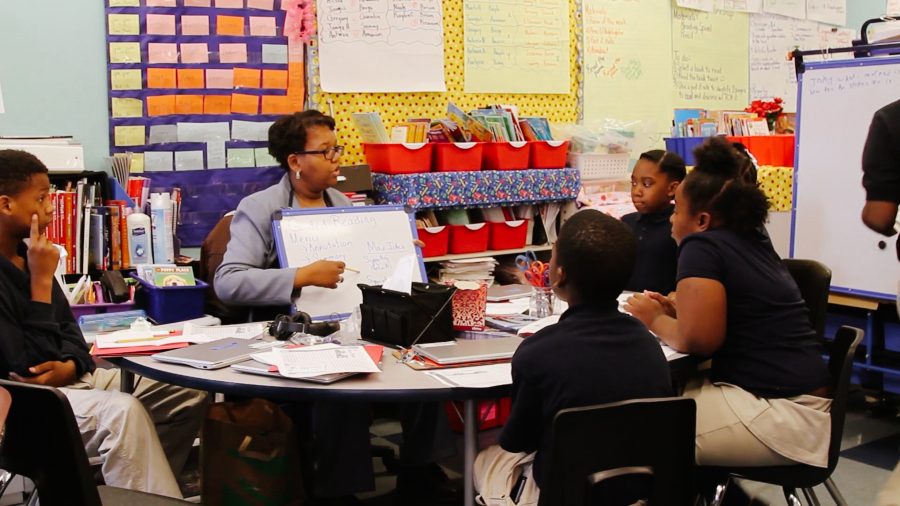Learner Focused
Learners are empowered to holistically understand their needs, strengths, and interests.
1.4
points higher GPA among ninth-grade students provided with a culturally relevant curriculum (4.0 scale)
*Dee, T. S., & Penner, E. K. (2017). The Causal Effects of Cultural Relevance: Evidence From an Ethnic Studies Curriculum. American Educational Research Journal, 54(1), 127–166.”
How Do Learner Focused Experiences Help Students?
Learning doesn’t happen in a vacuum. What occurs inside children and outside their classrooms has an enormous impact on their academic success. Students thrive when their learning is relevant to their lives and shaped by their individual needs, strengths and interests, as well as their approaches to learning. Understanding all the factors at play—even the ones that teachers can’t control—makes those factors into sources of strength, rather than barriers to learning.

The Guidelines of Learner Focused
Learners deepen their understanding of themselves holistically, including:
- academic needs, strengths, and interests
- physical and mental health
- social and emotional learning
- cognitive skills (i.e. focus, working memory)
- identity and culture
- social and community context
Co-design a milestone map with learners on their past experiences and future goals and dreams.
Show Example
Example: A teacher talks one-on-one with each incoming learner about his/her previous experiences in school and influential moments. They then co-author a shared plan for future goals.
Show Strategy
Engage in cultural competence training and actively seek to learn more about the cultures of your learners.
Show Example
Example: A teacher serving a primarily Puerto Rican population actively researches major holidays and traditions, engaging with learners and their families to better understand the nuances and values of the culture.
Show Strategy
Review available information regarding learners’ prior academic performance (e.g. testing, work samples, and portfolios).
Show Example
Example: A teacher reviews a historical portfolio of a learner’s prior performance that includes sample work and areas of success or struggle, going over it with the learner to confirm the findings.
Show Strategy
Conduct observations and assessments to confirm learners’ current academic levels, as well as their responses to varying levels of academic challenge.
Show Example
Example: A learner takes a pre-assessment before starting a new topic in school, so both the learner and the teacher can see what the learner already knows and what he/she still needs to learn.
Show Strategy
Meet regularly with key supporters (e.g. parents, teachers, extracurricular staff, therapists) to inform the strategy for the learner’s development.
Show Example
Example: Learner-led conferences are held prior to the start of the new school year with parents and others to discuss the learner’s needs and co-develop a support plan that is revisited throughout the year.
Show Strategy
Learners experience learning that is relevant, challenging, contextualized, and designed for their individual needs, strengths, and interests.
Redesign curricula and learning experiences to reflect the learner’s culture and expand self-awareness.
Show Example
Example: A teacher integrates works of literature that feature protagonists of the same culture or background as different learners in the class.
Show Strategy
Create flexible learning environments to adapt to key needs (e.g. time, space, content).
Show Example
Example: A team of teachers removes the doors between their classrooms and changes the furniture layout to create different learning “nooks” and dynamic groupings based on learner needs.
Show Strategy
Partner with learners to explore ways to modify or vary content to align with their needs, strengths, and interests.
Show Example
Example: A teacher works with her English language learners to incorporate more drawing and sketching of ideas in their science class.
Show Strategy
Offer flexible modalities, groupings, times, and places for learning to help meet individual learner needs, strengths, and interests while balancing these individual needs with the needs of the class community.
Show Example
Example: A teacher has several “centers” set up in his classroom for learners to learn about reducing fractions. They can watch a video, practice with an online program, use manipulatives, work with a partner on a worksheet, or do a mini-lesson with a teacher.
Show Strategy
Design lessons and information using the principles of Universal Design for Learning, including multiple means of representation to support learners with limited working memory skills.
Show Example
Example: A teacher redesigns content in an English lesson to reduce the number of concepts a learner reads at a single time and shows the target concepts in multiple ways.
Show Strategy
What Does the Research Say?
When learners choose their own reading material based on their interests, their reading skills improve, in both the elementary and middle grades.1
Integrating social-emotional development into academic lessons improves student behavior, which leads to greater content knowledge and motivation to learn.2
Culturally responsive teaching includes: high academic expectations and using student strengths; cultural competence, where teachers reshape lessons based on the culture of the students; and critical consciousness, where teachers share power, engage in social justice, and encourage students to challenge the status quo.3
Integrating social-emotional development into academic lessons improves student behavior, which leads to greater content knowledge and motivation to learn.2
Culturally responsive teaching includes: high academic expectations and using student strengths; cultural competence, where teachers reshape lessons based on the culture of the students; and critical consciousness, where teachers share power, engage in social justice, and encourage students to challenge the status quo.3

1. Learner Focused Guideline #1
Learners deepen their understanding of their academic needs, strengths, and interests
2. Learner Focused Guideline #1
Learners deepen their understanding of their social and emotional learning
3. Learner Focused Guideline #1
Learners deepen their understanding of their identity and culture
